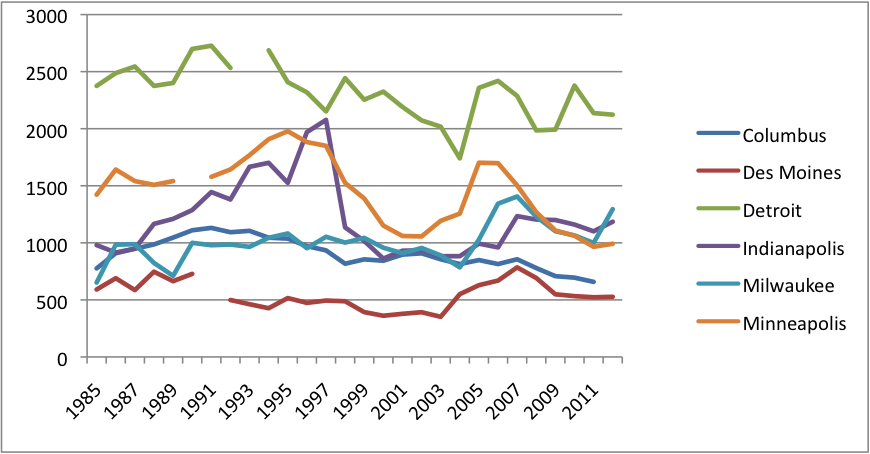As a person who has always considered the City of Milwaukee to be home, I find Craig Gilbert’s ongoing study of political polarization in the metropolitan area to be both thorough and illuminating. His research indicates that when it comes to Republican and Democratic voting patterns, the area has become more polarized than any area outside of the American South. What’s more, the political polarization very strikingly correlates with race, ethnicity, education, and population density. Republican voters reside largely in middle and upper-class suburbs in Waukesha, Washington, and Ozaukee counties, while the impoverished and working poor reside and vote in the City of Milwaukee’s Democratic inner-city.
When we reflect on what has come to be, it is important that we not take the polarization to be simply a naturally occurring phenomenon and thereby overlook the political agency involved, that is, the way some socio-economic groups attempt to contain and control other socio-economic groups. Polarization has taken place in part because local and state governments have used law and legal arrangements to push socio-economic groups apart, to assign poorer citizens to certain areas, and to reduce the clout of these citizens at the polls.
 When orchestras hit the headlines, the news is rarely good. The latest example is the Milwaukee Symphony Orchestra (MSO), which announced in December that it must raise $5 million just to complete the season. Although management and the musicians have cooperated to come up with substantial cost savings, the orchestra’s survival has become highly uncertain.
When orchestras hit the headlines, the news is rarely good. The latest example is the Milwaukee Symphony Orchestra (MSO), which announced in December that it must raise $5 million just to complete the season. Although management and the musicians have cooperated to come up with substantial cost savings, the orchestra’s survival has become highly uncertain.
